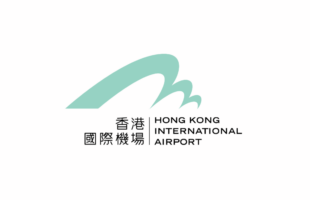

The transport of luxury items—from fine art to jewellery—spans global markets, and the importance of high-value cargo insurance cannot be overstated. With Asia’s emerging middle-class and high-net-worth individuals investing in such valuables, businesses must navigate a complex landscape of international regulations and physical risks. High-value cargo insurance doesn’t just mitigate the potential for loss and damage during transit; it also provides peace of mind amid the uncertainties of theft, accidents, and unforeseen events.

Brian Yang, Head of the Fine Art & Specie and Marine Stock Throughput at Chubb Asia Pacific, explains that transporting high-value items such as fine arts and jewellery entails numerous physical risks throughout the logistics chain. These risks arise at various stages, including ordering, packaging for export, movement from the company’s location to transport hubs, and preparation for local or international shipments. While accidents are relatively infrequent, common causes include truck collisions, severe weather, and fires. Additionally, random or organised crime poses a significant threat in many regions worldwide. “To mitigate these risks,” Brian notes, “high-value cargo insurance provides comprehensive protection against physical loss or damage during transit, ensuring that valuable items are safeguarded throughout their journey.”
Insurance policies for high-value cargo
Standard cargo insurance provides universal coverage for goods against physical loss or damage during transit, typically encompassing high-value items. However, high-value cargo often necessitates bespoke insurance tailored to the specific nature of the goods. For example, art pieces for exhibitions usually require a static cover at a named location, as the standard transit cover ends once the goods are delivered to their final destination. Insurance premiums for high-value cargo are calculated based on historical data, including loss frequency and average claims costs for different types of valuable goods, transport modes, and jurisdictions. Companies can potentially lower their premiums by providing detailed information, adhering to best practices, and working with experienced insurers to ensure adequate protection.
Customisable policies and additional services
Specialist insurers often customise policies to meet specific client needs and the nature of the high-value goods being insured. “It is common to tailor the policy according to the client’s requirements,” says Brian, noting that art pieces, in particular, require an insurer with relevant experience due to multiple shipments from various locations for exhibitions. This necessitates specialist cover for both transit and static risks. Additionally, most specialist insurers offer risk management services that are critical in underwriting before a policy is issued and an accident occurs. “A specialist insurer will work with their experts or have arrangements with external vendors experienced in the movement of valuable goods,” Brian adds. These insurers pool data to provide specific information on claims hotspots by type of loss, location, and transport mode. For international transport, a specialist insurer usually requests a desk or physical survey before preparing the transit for the highest-value band of goods. For lower to mid-value bands, policies may include specific conditions such as GPS tracking, shock and vibration monitors for the container, or specialists experienced in handling specific goods.
Trends in high-value cargo insurance and regulation
The latest trends in high-value cargo insurance reveal a significant shift towards integrating insurance into the digital purchase pathway, enhancing the customer experience and adding value for transport services. “Many transport services are now online, and cargo insurance is embedded into the purchase pathway,” Brian explains. This integration saves time and effort for customers and streamlines the process of transport operations. For those working with online services, embedding an insurance offering is highly recommended. In most jurisdictions, this requires a licensed insurance intermediary with specific trading terms with specialist insurers, outlining their roles and responsibilities. “It is important to note that insurance does not have the same requirements as transportation, as insurance regulations are often border-specific and online consumer laws can be more onerous,” Brian adds. Furthermore, recent and upcoming regulatory changes could impact high-value cargo insurance offerings. “Embedded products in online platforms and regular changes to consumer laws affect products offered to the emerging middle class and high-net-worth clients,” Brian notes. Additionally, regulations over the movement of funds, such as those involving cryptocurrencies at online auctions, are also evolving, influencing the landscape of high-value cargo insurance.
“A proactive and transparent approach is essential for businesses looking to insure high-value cargo for the first time,” Brian advises. Transparency in providing necessary information to specialist insurers and collaborating with reputable logistics companies with positive client feedback are crucial steps. Depending on the value and nature of the goods, partnering with a specialist insurer offering comprehensive services, including online and offline coverage, is beneficial. This approach doesn’t just effectively mitigate risks; it also fosters a strategic partnership geared towards safeguarding assets throughout their transit journey.
This story appears in the May-June 2024 issue of Payload Asia.








